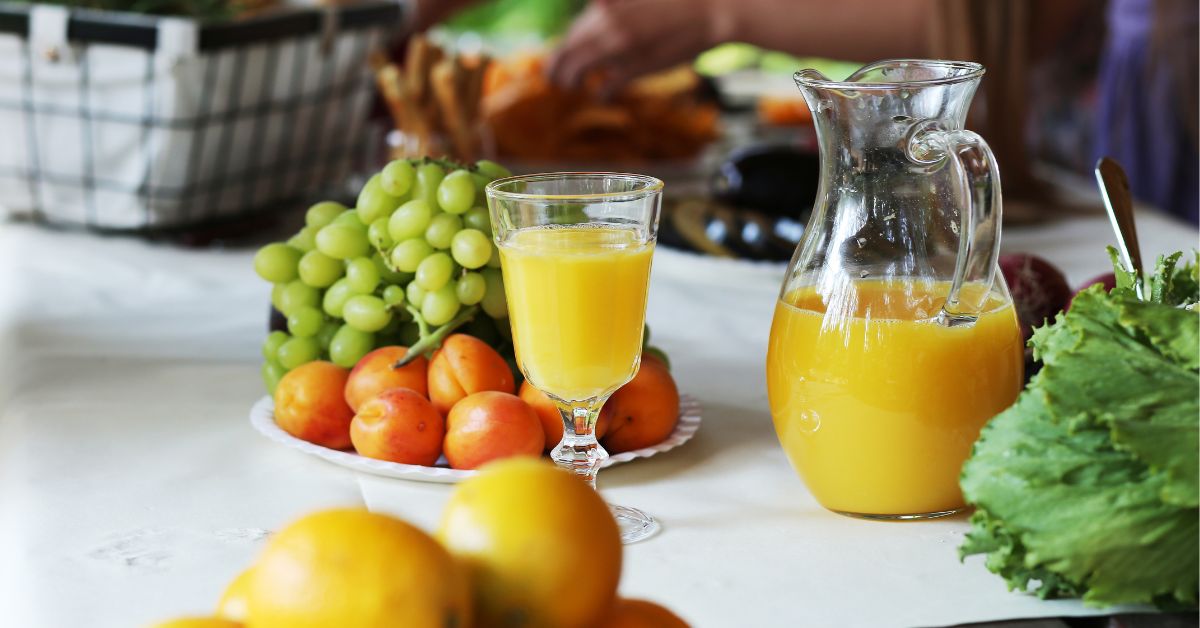Contents
- 1 Introduction to Juicing
- 2 Science Behind Juicing and Its Health Benefits
- 3 Nutrients and Minerals Found in Juices
- 4 Top Fruits and Vegetables for Juicing
- 5 How to Incorporate Juicing into Your Diet?
- 6 Delicious Juice Recipes
- 7 Potential Risks of Juicing and How to Avoid Them
- 8 Tips for Choosing a Quality Juicer
- 9 Conclusion:
Introduction to Juicing
Are you looking to boost your health and wellness in a fun and delicious way? Juicing might be the perfect solution for you! Join us on a journey to explore the ultimate guide to the health benefits of juicing.
From understanding its science to discovering nutrient-packed recipes, we’ve got you covered. Get ready to revitalize your body from the inside out with nature’s very own liquid gold – fresh juices!
Science Behind Juicing and Its Health Benefits
Juicing is not just a trendy fad; there’s actual science behind its health benefits. When you juice fruits and vegetables, you extract the liquid containing essential vitamins, minerals, and antioxidants that are easily absorbed by your body. This process allows for a concentrated dose of nutrients in one glass.
The high levels of antioxidants found in fresh juices help to combat oxidative stress and reduce inflammation in the body, promoting overall well-being. Additionally, juicing provides a quick and convenient way to consume a variety of produce that you might not typically eat whole.
Regularly incorporating freshly made juices into your diet can boost your immune system, improve digestion, increase energy levels, and support healthy skin. The enzymes in raw juices also aid in detoxification processes within the body.
Juicing can be a powerful tool for enhancing your health and vitality through natural means.
Nutrients and Minerals Found in Juices
Juicing is a fantastic way to pack essential nutrients and minerals for our health and well-being. Fruits like oranges, berries, and kiwis are rich in vitamin C, which boosts the immune system and promotes healthy skin.
Leafy green vegetables such as spinach, kale, and cucumber are excellent magnesium, iron, and potassium sources. These minerals support bone health, aid muscle function, and help regulate blood pressure.
Carrots provide a hefty dose of beta-carotene – a precursor to vitamin A that is crucial for good vision. Beets contain nitrates that can help improve athletic performance by increasing muscle oxygen flow.
By juicing various fruits and vegetables together, you can create nutrient-dense concoctions that fuel your body with the vitamins and minerals it craves.
Top Fruits and Vegetables for Juicing
When it comes to juicing, selecting suitable fruits and vegetables can make all the difference in taste and health benefits. Some of the top juice choices include vibrant greens like spinach, kale, and Swiss chard. These leafy greens are packed with vitamins, minerals, and antioxidants that can help boost your immune system and promote overall well-being.
Citrus fruits such as oranges, lemons, and grapefruits are also popular options for juicing due to their refreshing flavors and high vitamin C content. Not only do they add a zesty kick to your juice blends, but they also provide a powerful antioxidant boost.
Root vegetables like beets and carrots are another great addition to your juicing recipes. Beets are known for their detoxifying properties, while carrots offer a sweet flavor and a healthy dose of beta-carotene.
Incorporating a variety of colorful fruits and veggies into your juicing routine ensures that you’re getting a wide range of essential nutrients to support your overall health and wellness.
How to Incorporate Juicing into Your Diet?
Are you looking to add more fruits and vegetables to your diet in a fun and creative way? Juicing might be the answer for you! Incorporating juicing into your daily routine can be a delicious and convenient way to boost your nutrient intake.
Start by choosing colorful fruits and veggies that appeal to your taste buds. Experiment with different combinations until you find the flavors that you love the most.
Consider replacing one meal or snack with fresh juice each day. Whether breakfast, lunch or an afternoon pick-me-up, there’s always a perfect time for a refreshing glass of juice.
To make things even easier, prep your ingredients by washing, peeling, and chopping them so they’re ready to go when craving freshly squeezed goodness.
Remember that juicing should complement your diet rather than replace whole fruits and vegetables entirely. Pairing it with a balanced meal plan will help ensure you get all the essential nutrients your body needs. Happy juicing!
Delicious Juice Recipes
Ready to take your juicing game to the next level with some mouth-watering juice recipes? Get ready to tantalize your taste buds with a variety of delicious combinations.
How about a refreshing green juice packed with kale, cucumber, celery, and a hint of lemon for that extra zing? Or would you prefer a vibrant beetroot and carrot concoction that’s as visually appealing as it is nutritious?
For those looking for something sweeter, why not try blending apples, strawberries, and a touch of ginger for an antioxidant-rich treat? And let’s remember the classic orange-carrot-ginger mix that always brightens your day.
Experiment with different fruits and vegetables to find your perfect blend – whether it’s tropical flavors like pineapple and mango or earthy tones from spinach and parsley. The possibilities are endless when it comes to creating delicious juice recipes!
Potential Risks of Juicing and How to Avoid Them
When it comes to juicing, there are some potential risks that you should be aware of to enjoy its benefits safely. One common risk is consuming too much sugar from fruit juices, which can lead to spikes in blood sugar levels. To avoid this, try incorporating more vegetables into your juices and limiting the amount of high-sugar fruits.
Another risk of juicing is the loss of fiber during the extraction process. Since fiber is essential for digestion and gut health, consider adding a scoop of fiber-rich supplements or blending some pulp back into your juice.
Also, improper fresh juice storage can lead to bacterial growth and foodborne illnesses. Ensure that freshly made juices are consumed within 24 hours or appropriately stored in airtight containers in the fridge.
Using contaminated produce or not washing fruits and vegetables thoroughly before juicing can also pose health risks. Always wash your produce with water and vinegar before juicing to minimize exposure to harmful bacteria or pesticides.
Tips for Choosing a Quality Juicer
- When choosing a quality juicer, remember a few key things. First and foremost, consider the produce you’ll be juicing most often. Some juicers are better suited for leafy greens, while others excel at extracting juice from hard fruits and vegetables.
- Another essential factor to consider is the speed of the juicer. Slow masticating juicers preserve more nutrients and enzymes than fast centrifugal ones. Additionally, look for features like easy cleanup, multiple speed settings, and a large feeding chute that can accommodate whole fruits and veggies.
- Durability is also crucial when selecting a juicer. Opt for brands known for their reliability and longevity. Reading reviews from other users can provide valuable insights into the performance and lifespan of different models.
- Think about your budget. Juicers come in a wide range of prices, so determine how much you’re willing to invest based on your juicing needs and frequency. Remember, investing in a high-quality juicer now can lead to healthier habits in the long run!
Conclusion:
Juicing can be a fantastic addition to your health and wellness routine. By incorporating a variety of fruits and vegetables into your diet through fresh juices, you can quickly boost your nutrient intake and support overall well-being.
Remember to choose high-quality produce, mix up your recipes for variety, and enjoy the delicious flavors juicing offers. With some creativity in the kitchen and a quality juicer by your side, you’ll be on your way to reaping the many benefits juicing offers for both body and mind. Cheers to good health!



